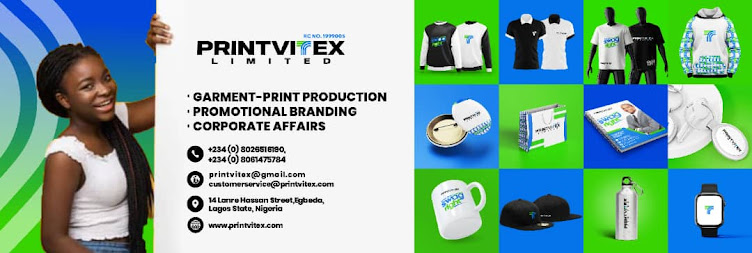In a world filled with traditional promotional merchandise, it takes creativity and innovation to make a lasting impression. Moses Eteng, a corn-jello hawker from Uyo, has proven that even in a seemingly low-class business, one can carve a niche and captivate customers with a unique approach. His story serves as an inspiring reminder to brand owners that promotional apparel can go beyond basic t-shirts, opening up a world of possibilities to create memorable and impactful brand experiences. In this thought-provoking article, we will delve into Moses Eteng's story and explore innovative ideas for promotional apparel that truly stands out. We will also address the challenges brand owners may encounter and provide actionable solutions to help elevate their promotional merchandise game.
Moses Eteng's Story:
Moses Eteng, a corn-jello hawker, defies expectations and challenges societal norms through his distinctive dress sense. Dressed in a neat suit and well-fitted tie, he leverages the power of visual appeal to woo customers and stand out from the crowd. Despite the perception of his trade as low-class, Moses has gained recognition and respect through his unique approach, proving that unconventional thinking can elevate any business.
Beyond T-Shirts: Exploring Innovative Ideas for Promotional Apparel:
- Customized Headwear: Expand your promotional apparel repertoire by offering customized headwear. From embroidered caps. scarfs to beanies with your brand's logo, headwear serves as a walking billboard that instantly grabs attention and adds a stylish touch to any outfit.
- Statement Jackets: Consider designing statement jackets that feature bold patterns, vibrant colours, or unique cuts. These eye-catching pieces can be conversation starters and create a strong visual impact while keeping recipients warm and fashionable.
- Athleisure Wear: Embrace the rising trend of athleisure wear by offering branded activewear or comfortable loungewear. These versatile pieces can be worn both during workouts and in casual settings, providing brand exposure in various environments.
- Eco-Friendly Apparel: Show your commitment to sustainability by incorporating eco-friendly materials into your promotional apparel. Offer organic cotton t-shirts, recycled fabric hoodies, or bamboo-based clothing to resonate with environmentally conscious consumers.
- Tech-Enabled Apparel: Stay ahead of the curve by integrating technology into your promotional apparel. Consider items with built-in wireless charging capabilities, LED lights, or even smart fabric that monitors health metrics. These innovative pieces will leave a lasting impression and showcase your brand's forward-thinking approach.
Challenges and Solutions:
- Production Complexity: Innovative promotional apparel may involve complex designs or specialized materials, posing challenges in production. Collaborate with experienced suppliers who have expertise in handling unique apparel ideas. Their knowledge and guidance will help overcome production complexities and ensure the desired quality.
- Budget Considerations: Investing in innovative promotional apparel can come with higher upfront costs. However, by carefully planning and budgeting, exploring cost-effective sourcing options, and leveraging economies of scale, brands can strike a balance between innovation and budget constraints.
- Brand Consistency: Maintaining brand consistency with innovative apparel designs is essential. Develop comprehensive brand guidelines that encompass not only visual elements but also the values and messaging your brand represents. Ensure that all innovative apparel aligns with your brand identity and reinforces the desired brand perception.
- Market Research: Stay informed about the latest trends and consumer preferences in the apparel industry. Conduct market research to identify emerging styles, materials, and technological advancements that can be incorporated into your promotional apparel strategy. By staying ahead of the curve, you can offer innovative products that resonate with your target audience.
Bottomline:
Moses Eteng's story of using his dress sense to stand out in a perceived low-class business serves as a powerful inspiration for brand owners. By thinking beyond traditional t-shirts, brands can unlock a world of innovative possibilities for promotional apparel that truly stands out. From customized headwear to statement jackets, eco-friendly options, and tech-enabled garments, the potential to create memorable brand experiences is boundless. However, it is important to address production complexities, budget considerations, and maintain brand consistency throughout the process.
By embracing innovation and offering unique promotional apparel, brands can captivate audiences, foster brand loyalty, and ultimately boost your swag right! So, let Moses Eteng's story ignite your creativity and propel your brand towards exploring innovative ideas that will make your promotional apparel a true reflection of your brand's identity and values.





.jpg)
.jpg)






